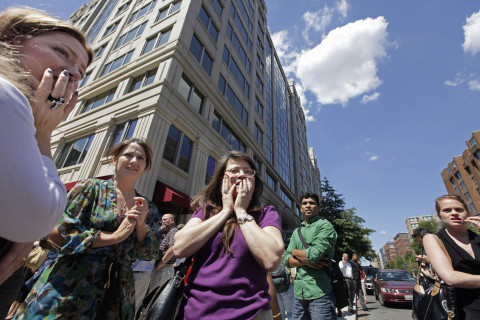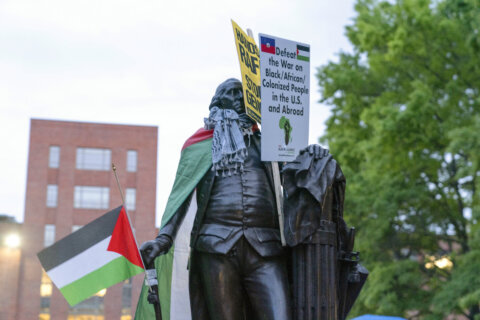WASHINGTON — The 5.8 magnitude earthquake that hit the D.C. metro area five years ago on Tuesday took many residents by surprise, but subsequent research reveals that earthquakes of even greater magnitude have originated from Central Virginia and a newly discovered fault line could shake the region again.
“Within the last 10,000 years or so there have been significant earthquakes,” said David Spears, the state geologist of Virginia.
No breaks in the Earth’s surface were identified in the 2011 event that originated in Louisa County. But excavations since then in a suspected fault area revealed ancient tears.
“We were able to discover these zones of gravel, these old river gravels that were actually offset during earth movement many, many years ago,” Spears said.
“One thing we hope people have learned is that … we can expect large earthquakes in Central Virginia,” Spears said.
To try to determine the potential for future quakes, Spears and his team with the Virginia Department of Mines, Minerals and Energy will look for additional breaks in the Earth’s surface along an ancient seismic zone. They’ll dig trenches this fall along the James River between Charlottesville and Richmond.
Spears meanwhile suggests policymakers consider more stringent building codes. Damage caused during the 2011 earthquake would have been mitigated by the use of reinforced concrete in building foundations, Spears said.
Residents also should be better versed on how to react immediately when an earthquake hits, Spears said. When a building is still shaking, it can be dangerous to run outside — like many people did five years ago.
“We saw a lot of falling bricks. We saw a lot of broken glass,” Spears said. “The thing to do when you feel a building shake is to shelter in place.”
During an earthquake:
- Drop to your hands and knees to avoid being knocked over
- Form your body into as small a ball as possible and get under a table or desk
- Cover your head with your arms by clasping your hands around your neck
- Being near a wall is better than being in the middle of a room
- An ideal location would be in a corner where two walls meet
The U.S. Geological Survey calls the 2011 Louisa County quake the most widely felt earthquake in U.S. history — detected as far north as Canada. Spears notes that areas with more regular seismic activity like California have breaks in the ground that interrupt the flow of a quake’s energy.
“We have ancient breaks in the Earth’s crust (here) like that. But because they’re so old, they’re healed almost like a cut on your arm would heal,” Spears said.








